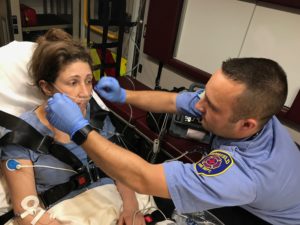The Most Important Vital Sign: 20 Things EMS Can Do With Capnography
“Perhaps the most important monitoring tool prehospital providers can use”, – end tidal waveform Capnography – isn’t just for respirations anymore. Using a simple four-step assessment technique, this program shows EMS providers of all levels how capnography can be used not only to confirm successful endotracheal intubation, but to evaluate shock in trauma patients, monitor for the return (or loss of) pulses during CPR, identify bronchospasm in asthma and hypoxic drive in COPD, to guide seizure management and paralytic medication administration, and much, much more. This case-driven session develops the fundamentals of capnography so that every EMS provider can improve the assessment, treatment and outcome for their patients using the diagnostic tools of end tidal waveform monitoring.
Teaching Formats:
-Lecture
-Case Studies
-Question and Answer
Learning Objectives: Students will be able to:
- Describe respiratory anatomy and physiology as it pertains to normal and abnormal production, storage and elimination of carbon dioxide.
- Explain the correlation between end tidal waveform monitoring and patient metabolism and circulation.
- Utilize the four-step technique for understanding and interpreting end tidal CO2 waveform progression.
- Apply end tidal waveform monitoring to the assessment and treatment of a variety of medical complaints and traumatic injuries.
For more information on this program click here to contact us.









